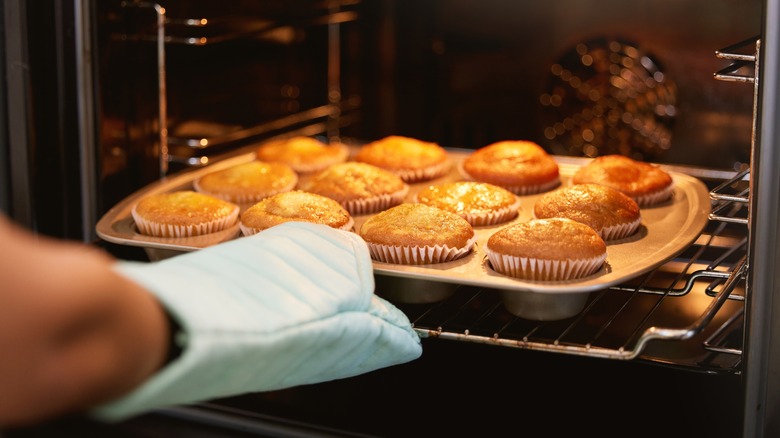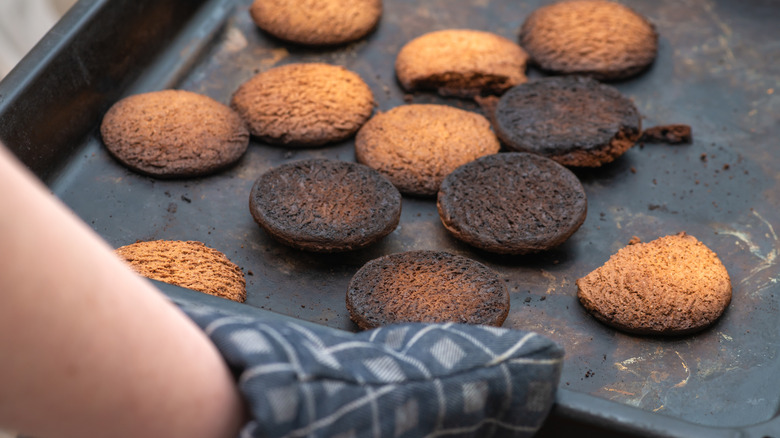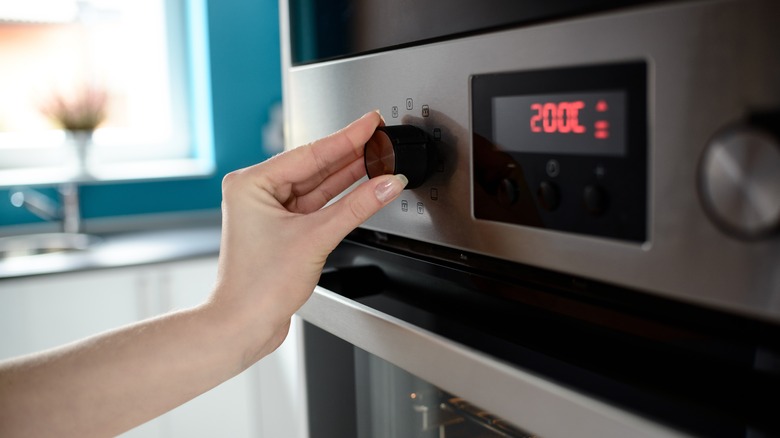The Riskiest Dishes To Cook In A Convection Oven
Convection ovens are sometimes held up as superior to conventional ovens thanks to the fact that they distribute heat evenly throughout the oven chamber (and they're more energy efficient). This is because they have fans that circulate hot air around the oven, resulting in even temperatures throughout: This means that in a convection oven, there should be no need to worry about which rack to place items on, and generally, they'll be more consistent. Compare this to conventional ovens, which don't move the air around, and as a result, will have temperature variations within.
However, they're not perfect — so you may want to pay attention when baking in a convection oven, as the air moving around from the fans can cause crusts to form faster when you're baking dishes like cakes, soufflés, cookies, muffins, and quick breads where you don't want the edges to dry out too quickly or too much. In short, it's mostly baked goods that can run into trouble when you're baking in a convection oven.
Still, not all baked goods fare badly in a convection oven: biscuits and pizza are two items that are better suited since they cook quickly and on high heat.
The differences (or issues) with convection ovens
The reason that convection ovens make your baked goods crisp up too fast is pretty obvious: Because of the fan, there's more air moving around in there compared to a conventional oven (where the air remains pretty still). So, the moving air will cook the exterior of baked goods faster — while the fan tends to pull moisture out of the oven, resulting in those potentially dryer crusts.
Conversely, this is also why convection ovens work well for roasted foods, especially meat. That moving air can yield a tender, pink interior and crispy browned exterior.
There's one other risk with convection ovens: The fan can even blow batter around, messing up your baked goods before they're even cooked. To be clear, this is not common and is something you will probably encounter with older convection ovens (if at all), but pay attention if you think your convection oven has an unusually strong fan. No one wants a collapsed soufflé or lopsided cake.
Adjusting recipes for a convection oven
Of course, you can try to adjust recipes for convection oven cooking to account for the differences between convection and conventional ovens. Ideally, you'll want to try to figure out which oven a recipe was written for. American recipes tend to be written for conventional ovens — but, unfortunately, it's not always clear unless a recipe explicitly states the type of oven its writer used. If you're unsure, or if the recipe is clearly for a conventional oven, then consider the following adjustments.
Firstly, if it's possible to turn the oven's fan off, do that (although it may not be possible on some convection oven models). Otherwise, lower the oven's temperature by 25 degrees Fahrenheit compared to the recipe, and consider baking the recipe for a few minutes less (or at least check on it earlier to figure out if it's cooking faster than it should). Since all recipes are different, there's no magic number for how much faster a convection oven might bake your cake or muffins — so just be vigilant and keep an eye on the oven window. If something is crisping up too fast on the top but needs more time to bake through, you can also cover it up with foil to protect it from the moving air.



